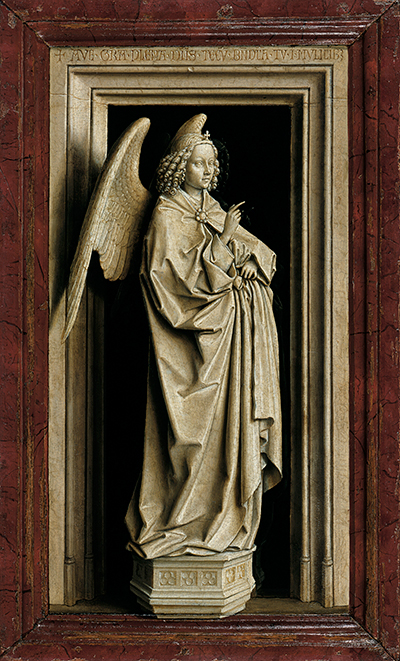This single figure portrait is one half of Jan van Eyck's Diptych of The Annunciation which came several years after his ionic Ghent Altarpiece
The figure captured here is the left hand side to the diptych, with the lady of the annunciation found here. The two portraits have matching dimensions in order to complete a symmetrical piece. It is assumed that the artist would have completed them at around the same time, due to their obvious connection to each other.
The composition is balanced differently in diptyches as compared to triptyches. In having two panels of equal size, they will naturally be assumed to have equal importance where as a three sided artwork will focus the viewer on the central panel, with the narrower supporting wings providing additional interest along the same theme.
Multi panelled works were frequent during the Renaissance but much less common in the modern day. Their intention would always be for installation within a religious building, such as above an altar for example. This charming format would often have hinged panels, meaning the artist would need to decorate both sides of the piece to allow for when it was opened or closed.
Van Eyck decorated his painting with a inner frame with inscribed lettering, something he did so on many occasions within his career. The artist wanted to ensure that his work was presented correctly so would produce the frames themselves and customise them for each painting.
The artistic concept of a diptych has been around for over a thousand years, perhaps best known as decorative art for a two-door entrance where the two need a complementary design. Many examples in ivory exist in the Louvre, for example. The early Netherlandish artists also made common use of this format, with Jan van Eyck being just one of those from his homeland to produce diptichs, alongside Rogier van der Weyden, Hans Memling and Hugo van der Goes.
The small dimensions of this piece would suggest that it was another commissioned piece intended for private use, with the donor worshipping on his or her's own. Van Eyck completed several small paintings for private donors, making his publicly displayed work all the more exciting and significant.




